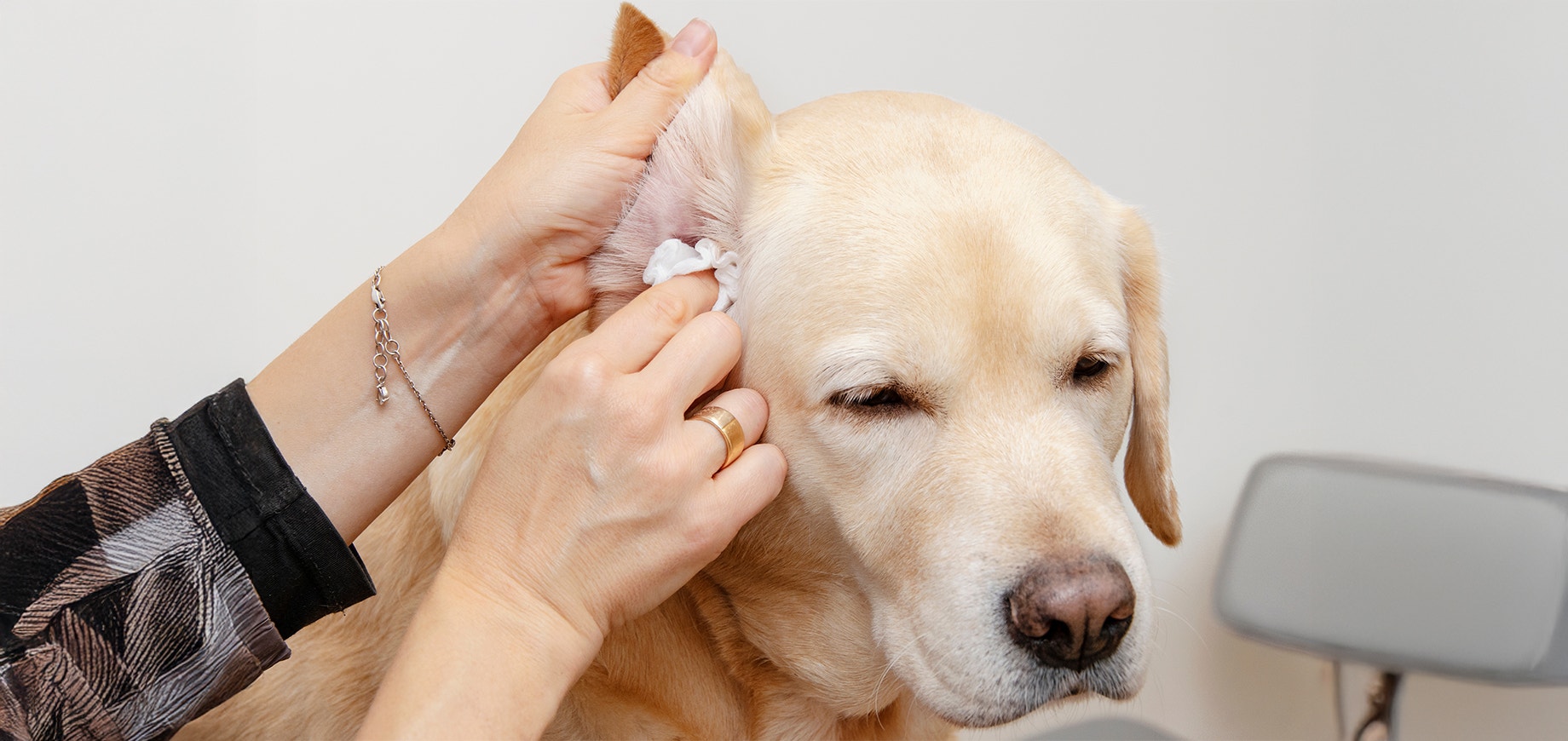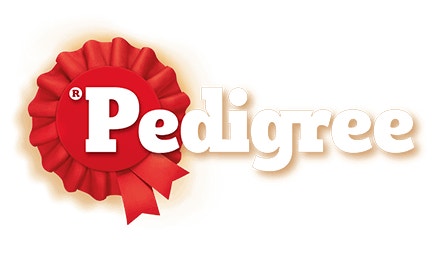

A key part of being a dog owner is making time for regular grooming. It’s important to thoroughly groom your dog from head to toe, but there are certain areas which may need special care, including the ears. Cleaning dogs’ ears regularly at home can help prevent discomfort for your pet, as well as reduce the risk of ear infections. Learning this key skill can help to support your dog’s overall wellbeing.
In this guide, we’ll cover everything you need to know, from how to clean dog ears safely and effectively, with top tips for how to clean dog ears at home naturally.
Cleaning dogs’ ears is incredibly important. Your dog’s ears allow your pet to hear, balance, and express themselves properly. However, over time, dirt, wax, and oils naturally build up inside your dog’s ear canals, which - if left untreated - can lead to infection or even hearing damage.
Different dog breeds have different types of ears; for example, ears that are flat to the head or ears that stand up straight. Dogs with longer, thicker hair or floppy ears may need more regular attention than shorthaired dogs. However, whichever type of ears your dog has, they will still need a good cleaning regimen to prevent harmful bacteria and dirt from building up inside. Dogs who also love swimming, or who spend more time in the water, also need more frequent ear cleaning to prevent moisture from causing infections. So, let’s dive into how to clean a dog’s ears.
Although professionals will be happy to clean your dog’s ears for you, the cost of dog grooming can be high, and their ears will need cleaning anywhere between weekly and monthly, depending on the breed. This is why most dog owners learn how to clean a dog’s ears themselves. Here’s how.
If you’re wondering how to clean dog ears at home naturally and safely, you’ll need:
It’s best to choose a time when your dog isn’t too tired, hungry, or distracted. Try to keep things calm and quiet to help reassure them.
Cleaning dogs’ ears at home is a fairly simple process, but your dog may take a bit of time to get used to it. By giving them plenty of praise and making dog grooming an enjoyable experience for them, it can help to keep them relaxed. Having someone to hold your dog as still as possible is not only a great help for you, but being able to cuddle your dog makes them feel safe and still, meaning the procedure is less likely to be uncomfortable for them.
Before you clean your dog's ears, you should first check for any discharge, debris, or infection. By taking a close look before you clean, you may be able to spot signs of infections early, such as ear mites or yeast buildup, and seek prompt vet treatment. If any of these are present, check with your vet before cleaning.
Important note: if you are looking in your dog's ear because they suddenly hold it to one side, start pawing at it or yelping when the ear is touched, you need to go straight to a vet to check for a foreign body in the ear canal or a painful infection. It is not recommended that you clean the dog's ears at home if they are sore or painful.
If the ears look healthy, you can go ahead and gently clean them using your dog ear cleaner. First, lift your dog’s ear flap to expose the ear canal. Carefully administer a little bit of the ear cleaner into the ear canal, but do not insert the nozzle directly into the ear. You should apply a few drops and gently massage the base of the ear to help loosen any dirt. The ear canal reaches almost down to the jaw, so massage all along the side of your dog's face from the opening of the ear to the base of their jaw. Most dogs tip their head onto your hand as they enjoy the feeling.
Massaging your dog’s ear is an important step in how to clean dog ears at home naturally, so try to do this for up to 30 seconds. This helps to clean all parts of the ear and loosen any built-up wax or dirt inside that you can’t see. It should also help to relax your dog, as most love being massaged!
Now it’s time to gently wipe away any visible exterior dirt. Gently use your cotton wool balls or pads to wipe around their ear canal to remove any debris. You should only wipe the underside of their ear flap and the visible outer area of the ear canal. Never insert a cotton wool ball, pad ,or swab into your dog’s ear as it can injure them or create problems further down the line. Because the cleaning process loosens and softens ear wax, please check the top of the ear canal every day for a few days after cleaning as more wax may slowly move upwards and can be wiped away.
After cleaning their ears, your dog will probably want to shake their head, so it’s important to let them do this. This can actually help the process along, as it can dislodge any remaining liquid from their ear canal.
After cleaning your dog’s ears, it's a good idea to give them a treat, such as PEDIGREE® RANCHOS™ Natural Chicken Treats, as this reinforces good behaviour and encourages them to be more keen to have their ears cleaned in the future. The secret to how to clean a dog’s ears is to get them used to the experience from an early age, and by making it rewarding for them, they’ll soon learn to trust you and may actually enjoy it. Regular grooming and cleaning can also help to build your bond.
The frequency of dog ear cleaning depends on your dog’s breed and lifestyle. Dogs with floppy ears, such as spaniels or basset hounds, or those prone to ear infections, need more regular cleaning. Breeds with sticking up ears, such as German Shepherds, usually need less regular cleaning. If your dog swims, digs, or gets very dirty, it's important to clean them more regularly, too.
Aiming to clean your dog’s ears around once a month is good practice. By learning how to clean dog ears at home naturally, from an early age, you can help get them used to the feeling. Be aware, though, that overcleaning can cause issues as well, so always follow your vet’s advice on how often you should clean your dog’s ears.
When you do your pre-cleaning checks, how do you know if what you’re seeing is normal or not? Here are our top tips for recognising when you need to take your dog to the vet for a checkup.
Firstly, the more you clean your dog’s ears over the years, you’ll likely start to recognise what’s normal for them. However, if you see anything causing you concern, it’s best not to clean their ears and seek help from your vet. Common signs of a possible ear infection are:
Ear mites, or an infection, may require specialised treatment. You can read more about the causes of ear infections in dogs on our blog.
How to clean a dog’s ears successfully relies on them trusting you. You should:
Some simple mistakes can have unexpected consequences, which may require veterinary treatment. Here are some things to avoid:
If your dog won’t let you clean their ears, it’s essential to take it slowly and use lots of praise and reassurance. How to clean dog ears if they aren’t keen is to gradually desensitise them by touching their ears, before you do any cleaning, and reward them with treats or a toy each time. By doing this regularly, they’ll become more used to you touching their ears, and eventually, you can start to gently clean them. You could also try getting someone to help you, and try doing it in a room they are comfortable in - such as the kitchen, rather than the bathroom.
Grooming and washing your dog is an important part of being a dog owner, and it should be built into their regular routine. As part of this, proper ear care is vital to maintaining your dog’s overall health and wellbeing. Ear cleaning at home can become simple to master, and can help to spot any early signs of infection or ear problems before they become too problematic for your pet. Some dogs love the feeling of having their ears cleaned and massaged, whereas others won’t be, so try to introduce the concept as early as you can to get them used to it. Always remember to be gentle, use plenty of praise, and reward them for letting you do it, to help set you both up for success.
The best dog ear cleaner will gently cleanse and moisturise the inside of your dog’s ears, and may well be one that contains more natural ingredients and fewer harsh chemicals, which can irritate their delicate skin. Ask your vet for recommendations.
No, it’s not recommended to use baby wipes to clean your dog’s ears, as they are developed for use on human skin. The pH and added chemicals on the wipes may irritate your dog’s delicate ears. It’s best to use only cotton wool balls or pads - never cotton buds.
No, you shouldn’t flush your dog’s ears with water, as this can lead to trapped moisture and ear infections. The aim of dog ear cleaning is to encourage any trapped moisture or debris to leave the ear canal, to help support your dog’s hearing, balance, and comfort.

